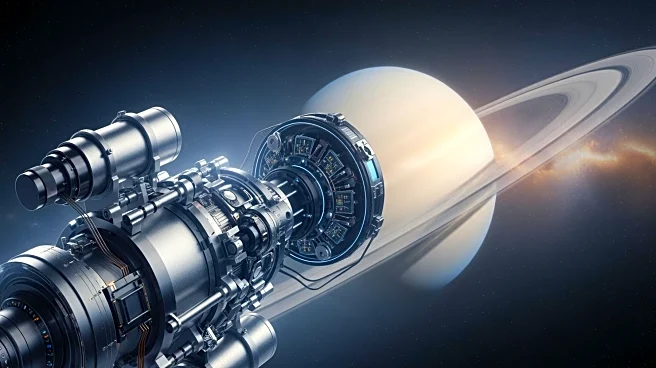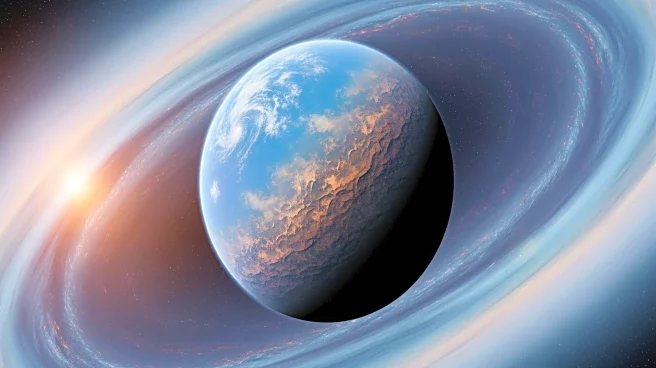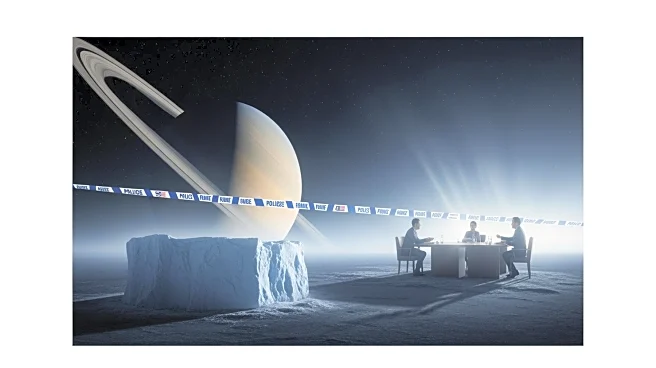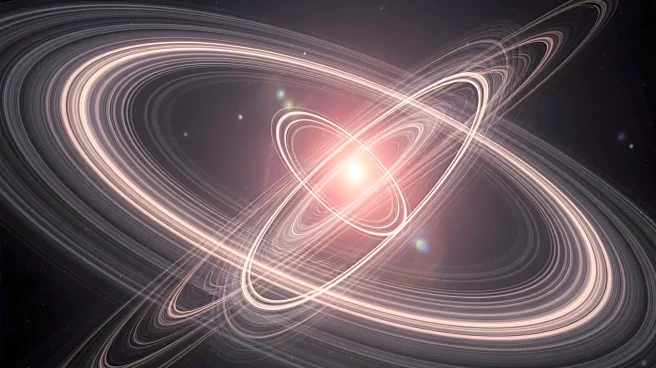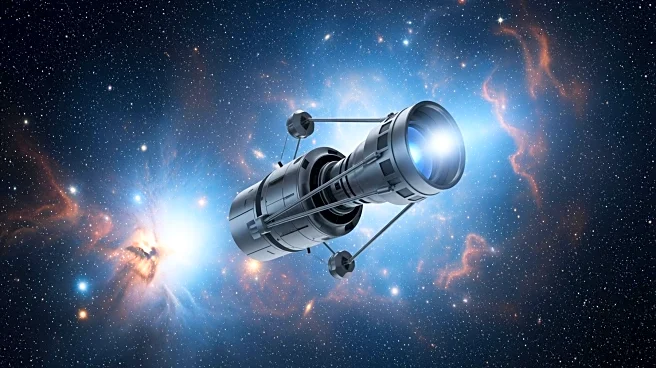What's Happening?
NASA's James Webb Space Telescope (JWST) has revealed two unprecedented phenomena in Saturn's atmosphere, challenging existing scientific models. The study, published in Geophysical Research Letters, describes
dark structures in Saturn's ionosphere and a star-shaped pattern in the stratosphere. These anomalies, termed 'dark beads' and an asymmetric star, defy current understanding of gas giant atmospheres. The beads, observed in the ionosphere, are dark infrared-absorbing structures that drift subtly, while the star-shaped pattern in the stratosphere is missing two arms, creating an asymmetrical figure. These findings suggest complex atmospheric dynamics not driven by known magnetospheric or auroral forces.
Why It's Important?
The discovery of these atmospheric anomalies on Saturn is significant as it expands the frontier of planetary science, offering new insights into the dynamics of gas giants. The findings challenge existing models and suggest the presence of localized, stable structures in Saturn's atmosphere. This could lead to a reevaluation of atmospheric behavior on similar planets, impacting future research and exploration strategies. Understanding these phenomena may also provide clues about atmospheric processes on other celestial bodies, potentially influencing the study of exoplanets and their atmospheres.
What's Next?
Further investigation is needed to understand the mechanisms behind these anomalies. Researchers may focus on the unexplored atmospheric layer between the ionosphere and stratosphere, which could hold the key to these phenomena. Continued observations using JWST and other instruments could provide more data, helping scientists refine models of Saturn's atmospheric dynamics. The study may prompt new missions or experiments aimed at exploring these unexplained features, potentially leading to breakthroughs in planetary science.
Beyond the Headlines
The discovery raises questions about the potential for similar phenomena on other planets, suggesting a need to revisit assumptions about atmospheric dynamics in the solar system. It also highlights the importance of advanced observational technology like JWST in uncovering hidden aspects of planetary atmospheres. The findings could inspire new theoretical models and stimulate interdisciplinary research, bridging gaps between atmospheric science, astrophysics, and planetary exploration.


